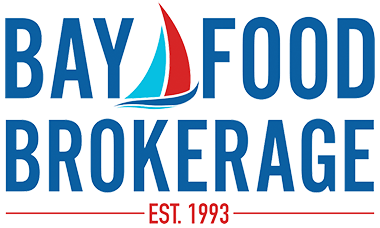
It’s all over the news – labor shortages, food logistics issues, global supply chain problems. The average supermarket shopper has probably at least once tried to buy an item on their shopping list in recent months that wasn’t on the store shelf.
As a leading Southeast grocery broker, we have an inside look at the challenges food manufacturers face right now. We’re also in a unique position to help them through these tough times.
Susan Jamieson, Administrative Team Lead, and Erin McCulloch-Crume, Director of Deli & Emerging Business, share their insights on today’s food logistics challenges – and how to address them – in this blog post.
Q: What is one of the biggest logistics-related challenges manufacturers face right now?
Susan: Driver shortages are making it difficult for manufacturers to find reliable carriers at prices they can afford. And when a retailer is trying to add on to a purchase order or get a product earlier, it’s rare right now that a trucking company can come through. Or, at least without overcharging.
Also, if manufacturers can’t produce enough product to completely fill a truck, it’s extremely difficult to find and secure less-than-truckload delivery options.
Q: What are the ripple effects when manufacturers can’t get their products to retailers?
Susan: These food logistics problems impact the business of the manufacturers and the retailers. Obviously, if there’s no product to sell, that’s going to have consequences for businesses. And, consumers can become dissatisfied with retailers when they can’t get the products they expect on the shelf.
There is also a snowball effect with orders. Once a retailer is shorted once, they start to order double and triple their normal demand to refill their pipeline. This makes it even more difficult for the supplier to fill their needs.
These global food supply chain issues directly impact the consumers’ wallets, too. When production and transportation pricing go up, prices of the products go up.
Consumers may have noticed fewer promotions, as well. This is because promotions require an even greater volume of product. Manufacturers are already having a difficult time fulfilling standard purchase orders, so manufacturers aren’t offering as many product discounts right now.
Q: What can manufacturers do to help alleviate or work around some of these challenges?
Erin: We’re seeing a lot of manufacturers assessing which SKUs are performing best and ceasing production of those that aren’t selling at as high a volume. In other words, SKU rationalizing. This helps manufacturers focus packaging, labor and transportation efforts on the specific products selling at the highest volume. By doing so, they maintain inventory on the items that are most important for the consumers to have on-shelf.
Also, as Susan mentioned, manufacturers should be strategic with offering promotions. Part of this is opting out of promotions that would make filling orders impractical or impossible. For example, it probably doesn’t make sense to offer a potato salad promotion for July 4th if the manufacturer is already having difficulty producing enough to meet standard orders.
Also, manufacturers should be adjusting their production and delivery timelines. Current food logistics and global supply chain challenges are delaying the process at every stage. Understanding and adjusting for this can help manufacturers decrease delays and shortages to the retailers. Increasing lead-time by even one day gives production teams an additional 24 hours to make the product needed. And every day counts.
Q: What can a grocery broker do to help manufacturers through these food logistics challenges?
Erin: The right grocery broker partner can be a valuable resource for food manufacturers, especially during this difficult time.
We’ve talked about promotions a couple of times. Brokers can educate retailers and manufacturers on how to be smart with promotions. This includes putting in place a plan to succeed with promotion strategy.
Also, brokers can act as a key communicator and advisor in managing shortages or potential shortages. For example, the broker is responsible for getting accurate forecasts from the retailer to the manufacturer so they can plan accordingly for orders. The broker can advise on lead times for supplies and labor and keep all involved up to speed on production and delivery status.
On the same note, if the grocery broker knows supply chain challenges will cause a manufacturer to be short on product, communication can help here, too. The broker can work with the retailer to reallocate the product where needed. For example, the broker can find out which stores already have enough product and which need more. Then, the manufacturer can deliver the product to the appropriate distribution centers to, hopefully, avoid empty store shelves.
Lastly, our retail reps on our brokerage team serve as eyes and ears in grocery stores for our manufacturers. If we see a brand has empty shelf space and one of our clients can fill it with their product, we’ll pursue that.
A good broker knows the nuances of every retailer and the capabilities of their manufacturer clients. The broker can bridge gaps to better serve manufacturers, retailers and, at the end of the day, customers.
Looking for a grocery broker to help your brand navigate global supply chain problems? Contact us today to learn how we can help.
